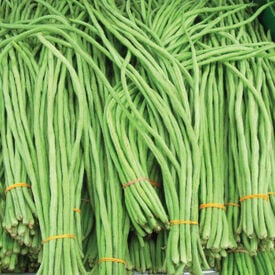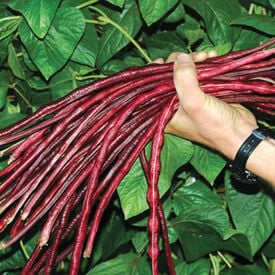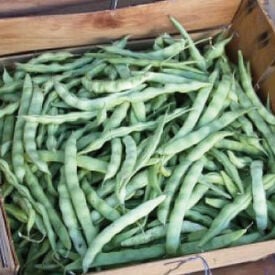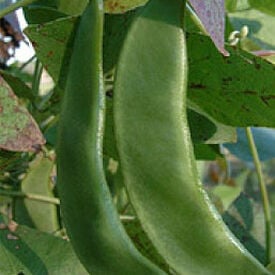The Yard Long White is a very long bean stalk from Asia. Yard Long Bean produces high yields of flavorful very long stringless white beans. This variety is a favorite because of it's sweet and tender taste. This is the white seeded variety.
Asparagus Red Podded beans are a unique and vibrant variety of snap beans known for their striking appearance and delicious flavor. Characterized by their deep red pods, these beans stand out in the garden and on the plate. They grow well in warm climates and can be harvested when young and tender for a delightful crunch in salads or stir-fries. In addition to their eye-catching color, they are rich in nutrients, providing a good source of vitamins A and C, fiber, and protein. The beans are not only visually appealing but also offer a sweet, earthy taste that complements a variety of dishes, making them a favorite among home gardeners and chefs alike.
The McCaslan 42 bean is one of the oldest heirloom varieties around! The medium green pods reach eight inches long and produce meaty, slightly flattened beans of superb quality. An old Southern favorite introduced in 1912 by the McCaslan family of Georgia. The vines produce prolifically throughout the growing season. Great dry or as a snap bean. Seeds are ivory-white, oblong and flat. A great cooking and canning bean.
King of the Garden beans are a classic heirloom variety cherished for their robust growth and exceptional flavor. Developed in the early 20th century, this variety has a rich history in American gardens, particularly noted for its productivity. King of the Garden lima beans are characterized by their vigorous pole growth habit, often reaching heights of 6 to 8 feet, making them ideal for trellises or fences. The pods are typically long, smooth, and bright green, growing up to 7 inches in length. Known for their rich, buttery flavor and tender texture, these beans are perfect for fresh eating, canning, or freezing. Harvesting is best done in mid-summer to early fall when the pods are still young and firm to ensure optimal taste and quality. The plants are not only prolific but also exhibit good disease resistance, making them a reliable choice for gardeners. With their delightful flavor, impressive yield, and historical significance, King of the Garden beans continue to be a favorite among home gardeners and culinary enthusiasts alike.




